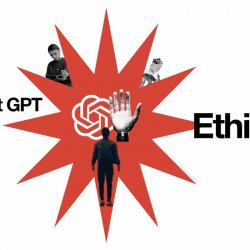Unleashing the Power of Machine Learning: Top 8 Python Tools for Success

Machine learning has become a transformative force across various industries, and Python stands out as the go-to language for implementing and deploying machine learning solutions.
Top eight machine learning tools in Python
Scikit-Learn: A Swiss Army Knife for Machine Learning:
Scikit-Learn is a versatile and user-friendly machine learning library in Python. It provides a wide array of tools for classical machine learning tasks such as classification, regression, clustering, and dimensionality reduction. With a consistent API, extensive documentation, and a strong community, Scikit-Learn is an excellent choice for beginners and seasoned practitioners alike.
TensorFlow: Deep Learning Powerhouse:
Developed by Google, TensorFlow is an open-source deep learning framework that excels in building and training neural networks. TensorFlow’s flexibility allows users to implement custom models, and its high-level APIs, like Keras, simplify the process for beginners. TensorFlow is widely used for tasks such as image recognition, natural language processing, and reinforcement learning.
PyTorch: Dynamic Neural Networks for Research and Production:
PyTorch is another popular deep learning library that has gained traction for its dynamic computational graph, making it particularly suitable for research and experimentation. It is favored by researchers for its intuitive interface and supports dynamic computation, making it easier to debug and experiment with models. PyTorch is also widely adopted in production environments.
Pandas: Data Manipulation Made Easy:
Pandas is a powerful data manipulation library that simplifies the handling and analysis of structured data. It provides data structures like DataFrames, making it easy to clean, transform, and analyze datasets. Pandas is an essential tool for preprocessing data before feeding it into machine learning models.
Matplotlib and Seaborn: Data Visualization Prowess:
Visualization is a crucial part of understanding data and model performance. Matplotlib and Seaborn are two powerful Python libraries for creating static, interactive, and publication-quality visualizations. Matplotlib provides a versatile set of plotting tools, while Seaborn simplifies the creation of aesthetically pleasing statistical graphics.
NLTK and SpaCy: Natural Language Processing (NLP) Tools:
For projects involving text data and natural language processing, NLTK (Natural Language Toolkit) and SpaCy are indispensable. NLTK offers a wide range of tools for tasks like tokenization, stemming, and sentiment analysis. SpaCy, on the other hand, is known for its efficiency and speed, making it a preferred choice for more complex NLP tasks.
XGBoost: Boosting Performance in Machine Learning Models:
XGBoost is an optimized and efficient gradient boosting library that excels in handling structured data and tabular datasets. It is widely used for classification and regression tasks and often dominates machine learning competitions. XGBoost provides high performance, scalability, and flexibility, making it a valuable tool for predictive modeling.
Jupyter Notebooks: Interactive Data Science and Documentation:
Jupyter Notebooks are an interactive computing environment that allows you to create and share documents containing live code, equations, visualizations, and narrative text. They are widely used in the data science and machine learning community for iterative development, collaborative work, and creating reproducible analyses.
Conclusion:
As the field of machine learning continues to evolve, having a strong arsenal of tools is essential for success. The Python ecosystem offers a rich set of libraries and frameworks that cater to various aspects of the machine learning workflow, from data preprocessing and exploration to model building and deployment. By mastering these top eight machine learning tools, you’ll be well-equipped to tackle a wide range of machine learning projects and contribute to the advancement of this dynamic field. Happy coding!
FAQs about python tools
What is the Python tool used for?
Python is a versatile programming language used for web development, data science, artificial intelligence, automation, scripting, game development, scientific computing, network programming, and more.
What tool is required to learn Python?
To learn Python, you need a text editor or integrated development environment (IDE) like VSCode, PyCharm, or Jupyter Notebook, and the Python interpreter installed on your computer.
What tool should I use for Python?
For Python, popular tools include VSCode, PyCharm, and Jupyter Notebook. Choose the one that fits your preferences and needs.






Ingen kommentarer endnu